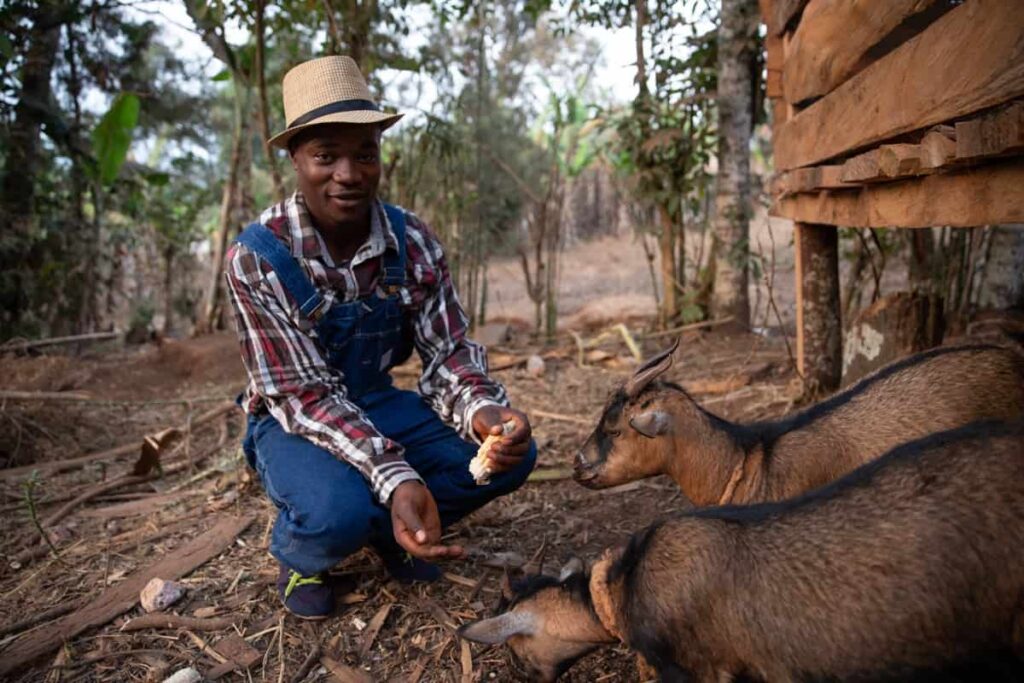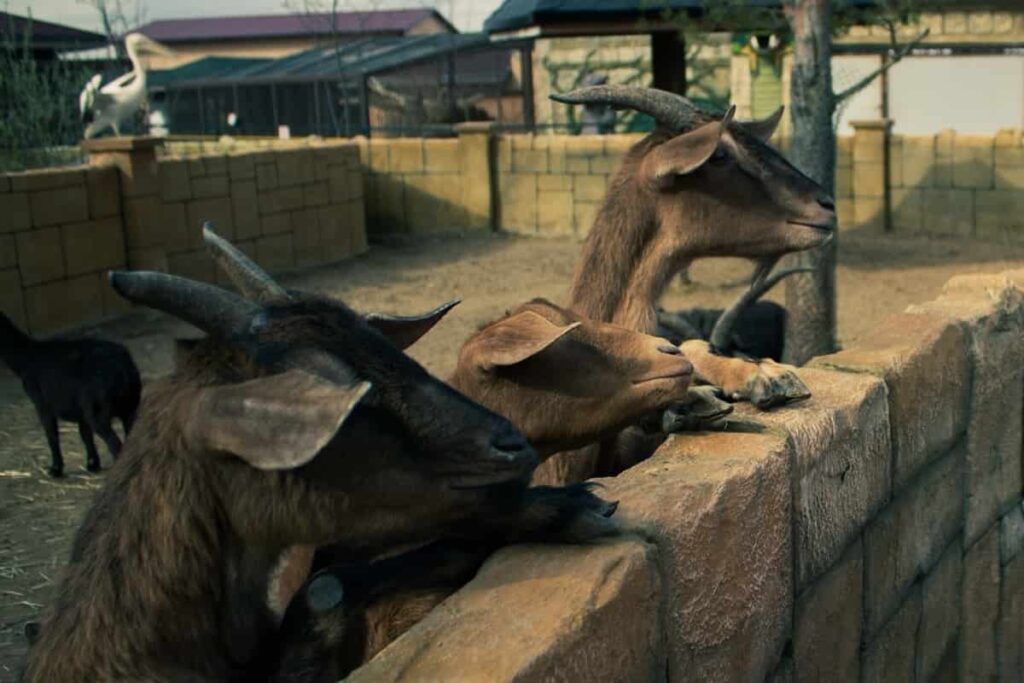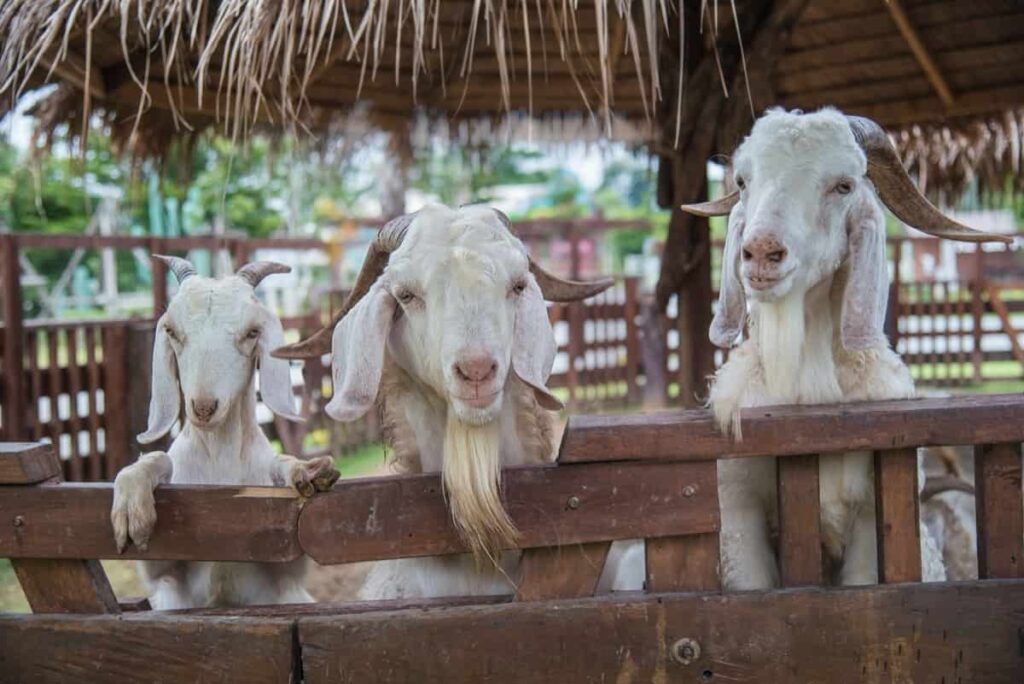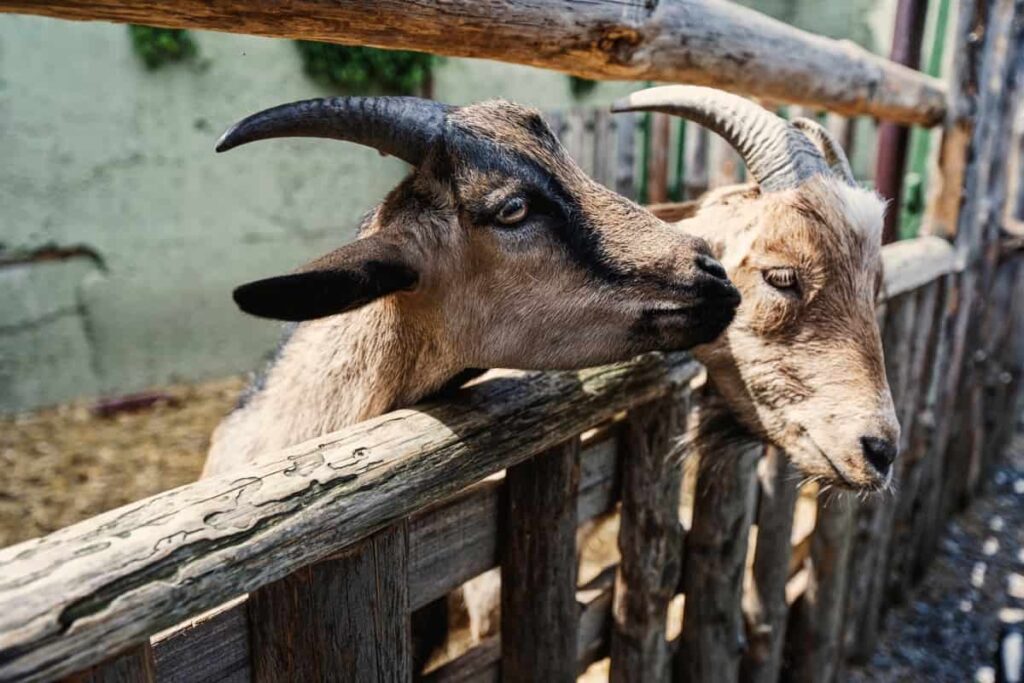In Zimbabwe, where agriculture plays a vital role in the economy, goat farming holds great importance. What is goat farming? Well, it’s the practice of raising goats for various purposes such as meat, milk, fiber, and even as pets. Goat farming has gained immense popularity in Zimbabwe due to its potential for profitability and sustainable agricultural practices.

Choosing the Right Goat Breeds for Farming in Zimbabwe: Factors to Consider
Some popular goat breeds suitable for farming in Zimbabwe include Matebele goats (known for their hardiness), Mashona goats (well-suited for meat production), Boer goats (renowned meat producers), Saanen goats (excellent milk producers), Kalahari goats (adapted to arid environments), Red Sokoto goats (resistant breed with good meat quality), and Angora goats (known for their mohair fiber).
Goat Housing and Shelter Design for Zimbabwean Farms: Ensuring Comfort and Safety
A well-designed and comfortable shelter not only ensures the safety of your goats but also promotes their overall health and productivity. Consider the size of the shelter. It should have enough space to accommodate all your goats comfortably, allowing them to move around freely.
Good insulation helps regulate temperature, keeping your goats comfortable in any weather conditions. Install sturdy fencing around the perimeter of the housing area to protect your goats from predators or theft. Also, ensure no sharp edges or objects within reach of curious goats that could cause injury. By prioritizing comfort and safety when designing goat housing and shelters in Zimbabwean farms, you are setting a solid foundation for a successful goat farming venture.
Setting Up a Goat Farm in Zimbabwe: Essential Infrastructure and Facilities
Firstly, you must have adequate land for your goats to graze and roam freely. Make sure the land is securely fenced to prevent any unwanted intrusions. Next, you will need suitable housing for your goats. Constructing sturdy shelters that protect them from harsh weather conditions is essential. These shelters should be well-ventilated and provide enough space for each goat to move around comfortably.
In case you missed it: How to Select Goats for Milk or Meat: A Simple Guide with Best Tips and Techniques

Additionally, it is crucial to have separate areas designated for feeding, watering, milking (if applicable), and storing feed or equipment. Investing in good quality tools and equipment like hoof trimmers, milk machines (if needed), weighing scales, etc., will greatly assist in the day-to-day management of your goat farm.
Feeding and Nutrition Management for Goats in Zimbabwe: Best Practices
- Balanced diet: Along with forage, supplement the goats’ diet with concentrates like grains or commercial feeds. This helps maintain their energy levels and promotes growth.
- Adequate water supply: Clean drinking water is always essential for goats. Ensure there are enough water sources available within the grazing area or barn.
- Feeding schedule: Establish a regular feeding routine to ensure consistency in nutrient intake and avoid overfeeding or underfeeding.
- Monitor body condition score: Regularly assess your goats’ body condition scores to determine if they’re receiving adequate nutrition or need adjustments in their diet plan.
- Healthy treats: While treats can be given occasionally as rewards or enrichment, limit them to avoid health issues like obesity or digestive problems.
Breeding and Reproduction Techniques for Goats in Zimbabwe: Maximizing Productivity
One important factor to consider is selecting the right breeding stock. Farmers should choose healthy and genetically superior goats for mating. This helps improve the herd quality and increases productivity. To ensure successful breeding, it is essential to understand the natural reproductive cycle of goats.
Proper nutrition plays a vital role in maximizing reproduction rates. It is important to provide balanced diets rich in protein, vitamins, and minerals to both males and females during breeding seasons. Regular monitoring of pregnant does is crucial for ensuring their well-being throughout gestation. Zimbabwean goat farmers can increase their herd size while maintaining genetic diversity and productivity.
Grazing and Pasture Management for Goats in Zimbabwe: Sustainable Land Utilization
It is important to carefully plan and manage pastures to maximize productivity and maintain your goats’ health. One key aspect of grazing management is rotational grazing. This involves dividing the pasture into smaller paddocks or sections and rotating the goats between them. Additionally, it is important to monitor pasture quality regularly.
In case you missed it: How to Feed Goats: A Chart/Table for Beginners

Goats have specific dietary needs, so it’s essential to ensure that they have access to high-quality forage with adequate levels of nutrients. Proper water management is equally important for grazing and pasture management. Ensure sufficient water sources are available throughout the grazing area, especially during hotter months when dehydration can pose a risk.
Marketing and Selling Goat Products in Zimbabwe: Strategies for Profitability
One effective strategy is identifying potential buyers and establishing direct connections with them. This could be local supermarkets, restaurants, or consumers interested in buying fresh goat meat or dairy products. You can secure regular orders and create a loyal customer base by building relationships with these buyers.
Furthermore, it’s essential to understand consumer preferences and adapt your marketing approach accordingly. Conduct market research to determine what goat products are in high demand in Zimbabwe. Another marketing strategy is to leverage social media platforms and online marketplaces.
Financial Planning and Management for Goat Farming in Zimbabwe: Budgeting and Record-Keeping
Proper budgeting and record-keeping can help farmers track their expenses, make informed decisions, and ensure profitability. Start by estimating the initial investment required for purchasing goats, building infrastructure, and acquiring necessary equipment. Additionally, factor in ongoing costs such as feed, veterinary care, labor, marketing expenses, and unforeseen contingencies. Record-keeping plays a vital role in financial management.
Maintaining accurate records of income and expenditure related to the goat farm is essential. This includes documenting sales of goats or products derived from them (such as milk or meat), as well as any additional sources of revenue like breeding services or manure sales. By keeping detailed records of expenses incurred on various aspects of the business feed costs per month per goat and veterinary expenses per year—it becomes easier to identify areas where cost-cutting measures can be implemented without compromising the health or productivity of the herd.
Health and Disease Management in Goat Farming: Preventive Measures for Zimbabwean Farmers
Maintaining your goats’ health is crucial for a successful goat farming venture in Zimbabwe. One essential step is to provide a clean and hygienic environment for your goats. Regularly clean their living area, remove waste or debris, and ensure proper ventilation. This will help prevent the diseases caused by unclean conditions. In addition to hygiene, vaccination plays a vital role in disease prevention.
Consult a veterinarian to find which vaccinations are necessary for specific diseases in Zimbabwe. Vaccinating your goats at the right time can significantly reduce the chances of infection. Regular check-ups and monitoring are also important aspects of disease management.
Observe your goats closely for any signs of illness like changes in appetite, weight loss, coughing, or diarrhea. Early detection allows prompt treatment and prevents further spreading among the herd. Quarantine new animals before introducing them into your existing herd. This precautionary measure helps prevent the potential transmission of diseases from unknown sources onto your farm.
In case you missed it: Top 6 Goat Farms in India: Biggest and Best

Table for Starting a Goat Farming Business in Zimbabwe
| Important aspects of goat farming | Proper management practices |
| Choosing Goat Breeds | Matebele goats, Mashona goats, Boer goats, Saanen goats, Kalahari goats, Red Sokoto goats, and Angora goats |
| Goat Housing & Shelter Design | Ensure comfortable shelters that protect goats from harsh weather conditions |
| Setting Up Farm Infrastructure | Establish suitable fencing systems and functional buildings |
| Feeding & Nutrition Management | Provide balanced diets with adequate nutrients |
| Health & Disease Management | Practice preventive measures through vaccinations |
| Grazing & Pasture Management | Utilize available land efficiently for sustainable grazing |
| Breeding & Reproduction Techniques | Implement controlled mating programs to maximize productivity |
| Marketing & Selling Goat Products | Develop effective strategies to promote products |
| Financial Planning & Budgeting | Keep track of expenses while ensuring profitability |
Conclusion
In Zimbabwe, goat farming has gained significant traction due to its numerous benefits. Goats require less space compared to other livestock animals. This makes them an ideal choice for small-scale farmers with limited land resources. Goat farming is crucial in Zimbabwe’s agricultural sector, contributing significantly to the country’s economy and food security.
Moreover, goat farming offers income diversification opportunities for rural communities in Zimbabwe. Many small-scale farmers rely on selling goats or their products at local markets or directly to consumers to generate additional income.
- Types of Grass Growing for Goat Farm
- How to Train Goats for Milking: A Beginners Guide
- Goat Milking Practices and Equipment: A Beginner’s Guide
- Goat Farming for Fiber: Producing Mohair and Cashmere
- Maximizing Goat Milk Production: Tips for Dairy Goat Farmers
- Goat Farming as a Family Business: Strategies for Success
- Profitable Kenya Goat Breeds for Commercial Dairy and Meat Business
- Unlock the Secrets of Oberhasli Goat: Discover Raising and Management Practices
- Ultimate Guide to Myotonic Goats: Explore Profile to Raising
Very useful and educative information indeed. Much appreciated
I need to start goat farming in Buhera at a 4000sq meter area
I greatly appreciate to be in the business of goat farming
What’s the best season of buying goats